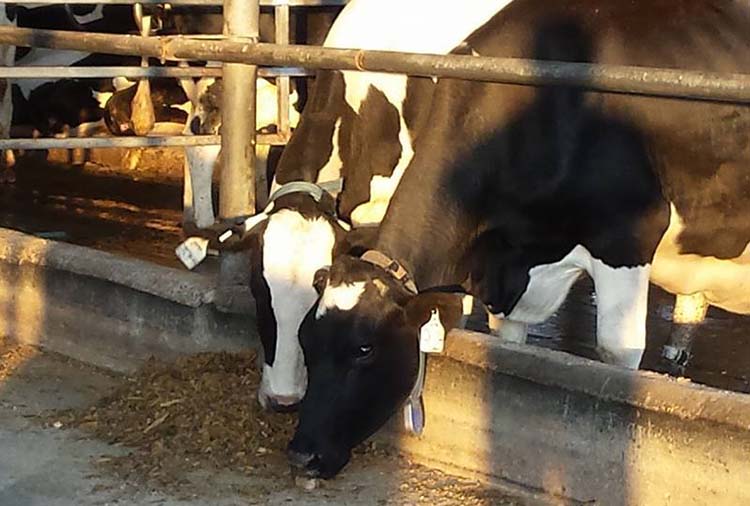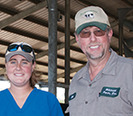
Every once in a blue moon we have a cold, sickness, or milk production drop from a feed change hit our herd. If you’re a dairyman, I am quite sure you have dealt with these things before. But, have you ever had a case of the “who knows what?”
You read that right . . . yes, I said, “Who knows what?” Sometimes you can talk to three or four different veterinarians and receive three or four different diagnoses. The conclusion may never be clear. What do you use to treat “who knows what?”
On November 12 I woke up, drank a cup of coffee, got ready, and headed into work. I do not usually work Sundays, so on Mondays I tend to feel a day off schedule with a little catch-up at hand. I went to my office and checked the activity monitors on my computer.
Then I checked milk production through the herd to see if anyone was off more than normal or if activity had fallen below the norm. To my surprise, I had quite a few problem cows to deal with. Most cows that were flagged had been giving 90 pounds of milk or more a day and had dropped more than 50 percent. I immediately started to write down numbers of cows to go look at on a piece of paper.
At this point I realized the problem was affecting more than one or two cows. We knew we were at the end of a ryegrass silage pit (probably only a day or two left in it). I called my feeder and told him to immediately switch to the new pit of ryegrass silage on my way out to see my girls.
Once I got out to the barn, I could immediately hear coughing. I separated out some of my flagged cows to assess the situation, and at that point I noticed heavy breathing and drainage. Some cows were lethargic, and some had a fever.
We called our local vet, another vet from the surrounding area, a couple of vets from the university, and our nutritionist. At that point I heard several different ideas of what it could be, but at the end of the day we had no concrete conclusion. I was given several different plans to attack the situation, which ranged from “There’s not much you can do” all the way to “Give them everything and the kitchen sink.”
Since I deal with mainly herd health and reproduction on our farm, I am not too big on sitting back and seeing what happens. I felt like I had to take some course of action. I took all the protocols into account and did the best I could for our situation on hand. Some cows received fluids, probiotics, aspirin, Excede, and vitamins while the less severe cases may have only been given aspirin and Probios.
I kept good notes over the next few days of which cows had what, how they appeared, and if their production had improved. A few more cows became sick throughout the week after the feed change, which made me wonder if the feed had anything to do with it.
We sent silage samples off and are waiting on the analysis of those. For the most part, my girls have recovered. There were a select few that were pregnant that we did not see the turn around we hoped for on production, but once they look healthy enough they will be dried off early.
I feel good about the course of action we took. For the majority to turn around the way they did after being so sick was amazing.
What have I taken away from this experience? Problems happen. Figure out a plan. Talk to different people. Be open to opinions (everybody’s got one). Make a move. Do whatever it takes. Try to stay positive. Don’t give up. The cows depend on you.

Mark and Caitlin Rodgers are dairy farmers in Dearing, Georgia. Their “Father and Daughter Dairy Together” column appears every other Thursday on HD Notebook. The Rodgers have a 400-cow dairy that averages 32,000 pounds of milk. Follow their family farm on Facebook at Hillcrest Farms Inc.